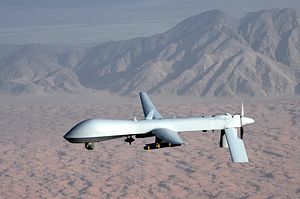Early on Saturday morning, the United States military carried out a drone strike that likely killed Mullah Akhtar Mansour, the leader of the Afghan Taliban.
If confirmed, the development would not only represent a significant setback for the group, which struggled to coalesce its leadership after the confirmation of long-time leader Mullah Mohammed Omar’s death last year, but also a change in how the United States views the conditions that would best facilitate the fragile return to peace talks between the Afghan government and the Taliban, which views itself as a government in exile.
“We are still assessing the results of the strike and will provide more information as it becomes available,” Peter Cook, press secretary for the U.S. Department of Defense, said in a official statement.
“Mansour has been the leader of the Taliban and actively involved with planning attacks against facilities in Kabul and across Afghanistan, presenting a threat to Afghan civilians and security forces, our personnel, and Coalition partners,” Cook added.
In added support of the strike, Cook added that “Mansour has been an obstacle to peace and reconciliation between the Government of Afghanistan and the Taliban, prohibiting Taliban leaders from participating in peace talks with the Afghan government that could lead to an end to the conflict.”
The United States is part of the four-nation Quadrilateral Coordination Group (QCG)–a group also comprising Pakistan, China, and the Afghanistan–that has sought to set up peace talks with the Taliban.
The strike against Mansour, which included another person who was assumed to have been a combatant, took place in the Pakistani province of Balochistan, near a small town called Ahmad Wal.
The strike marks the first time the United States has used a drone to strike a target in Balochistan. Most U.S. drone strikes in Pakistan have been carried out in the Federally Administered Tribal Areas (FATA) and Khyber Pakhtunkhwa province.

































